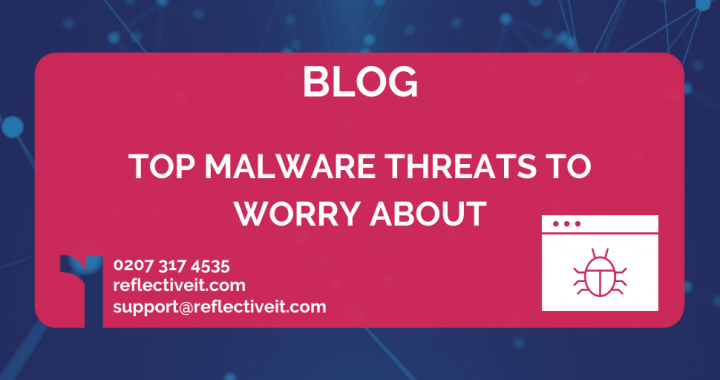In 2021, 74% of organisations experienced malware activity that spread from one employee to another.
With such high numbers of businesses reporting some form of cyber criminal activity, protecting vital computer networks and systems has never been more of a critical priority for the organisations of today. Unfortunately, malware threats have become a fact of modern life, with recent high-profile cases illustrating the extent of the damage that can be caused. Whilst governments and other bodies are seeking to fight against the ever- increasing risk posed by malicious software, ultimately the onus falls on the individual to put the right safety measures in place.
What Is Malware?
Simply put, it is a blanket description that refers to any kind of malicious or intrusive software. It is a literal abbreviation of the term “malicious software”, and, as such, can take a variety of forms, from viruses through to worms or spyware. Typically used by cyber criminals, the goal of most forms of such software is to access valuable or sensitive data, which can be used for financial gain either through ransom payments or through selling the information on to other criminals.
Any programmable device, network or computer service could be a potential victim of such an attack, meaning that almost anybody could be affected. The developments in IT technology which have benefited so many businesses in the last couple of years have also proved a boon to hackers, who can use the automation capabilities of cloud computing to launch bigger attacks with greater frequency. Arming yourself with knowledge is therefore essential to combatting the threat.
The Top Threats Today
33% of UK organisations state that they lost customers after a data breach and a recent Forrester study of UK and US companies found 38% had lost business because of security issues and whilst it’s difficult to rank the different malicious software threats that currently exist, is vital that you are aware of the top threats to your business. We’ve compiled our list of the most common threats:
1. Ransomware
Perhaps the biggest threat faced by organisations
today is ransomware. This malicious program works by encrypting an organisation’s data and releasing it only after a ransom payment has been
made. There is often an accompanying threat of destroying the data if the payment is not delivered, and a time limit is typically imposed. Ransomware attacks can prove cripplingly disruptive, as the Colonial pipeline incident in May demonstrated.
In its 2021 State of Email Security Report, Mimecast found that 61% of organizations experienced a ransomware attack that led to at least a partial disruption of business operations.
2. Spyware
This type of attack sees a device or computer infiltrated by software that can track and watch your every move. Capabilities include keystroke collecting, and activity monitoring, leading to the criminals who installed the program accessing financial or other account information, or other sensitive data. Devices are infected via a Trojan or it exploits security loopholes in legitimate software, and almost anyone can fall prey. Even Amazon founder Jeff Bezos is reputed to have been a victim of spyware.
3. Virus
This is possibly the best known form of threat, and for good reason. A virus can cause devastating damage to the devices it attacks, as it is capable of destroying data, reformatting hard drives, or simply shut everything down. Viruses can also be used to access valuable data, steal money and build botnets.
4. Worm
Another common threat, this type of malicious software exploits vulnerabilities to enter a computer network, where it then replicates itself in order to spread to connected devices. These worms can spread incredibly quickly, and hold an organisation to ransom or steal data.
5. Trojan
Just like the Trojan horse of Greek mythology, the Trojan looks like an innocent file or computer program- until the victim clicks on it. Trojans account for 58% of all computer malware and once installed, can be used to spy, steal or corrupt your data, and when used in conjunction with a worm or other form of attack, the effects can be catastrophic.
Your Role In Online Safety
Ultimately, staying safe online is an individual’s responsibility, and this comprises education and action. Make sure staff members understand online safety protocols, such as not clicking on unknown links in emails or social media. Be sure to keep protective software up to date, and install any updates immediately. In this way, you can hope to stay ahead of the threats online.
As experts in IT security, Reflective IT can support your business with a complete range of services including the development of an incident response plan – a critical step towards your robust and effective incident management and technical response capability.
If you need assistance with your IT security, don’t hesitate to contact us:
Tel: 0207 317 4535
Email: support@reflectiveit.com










